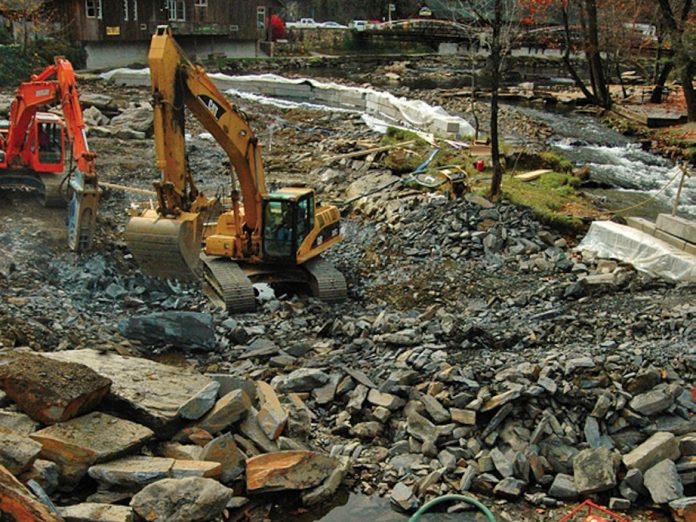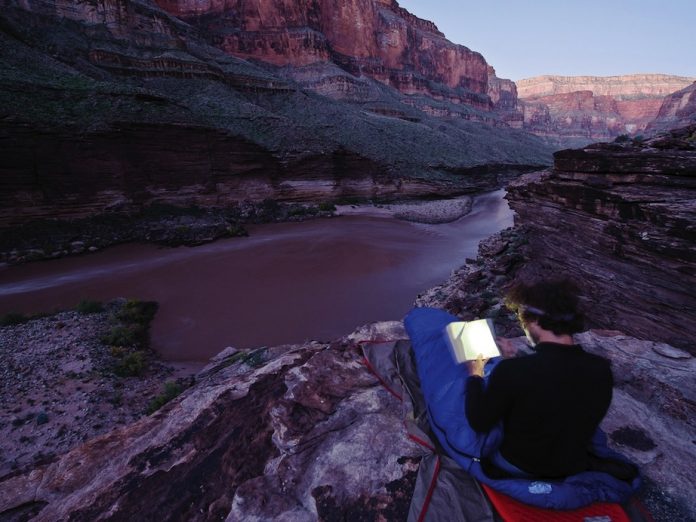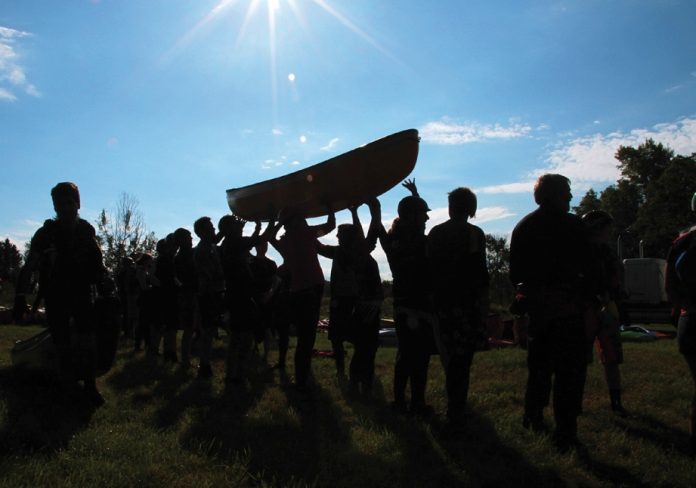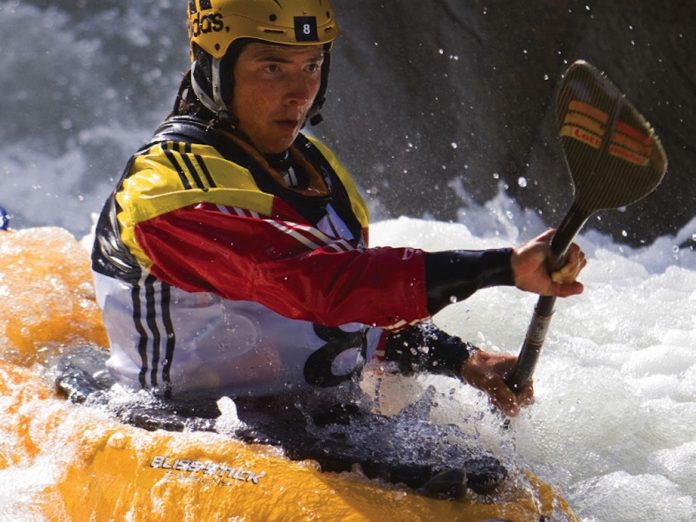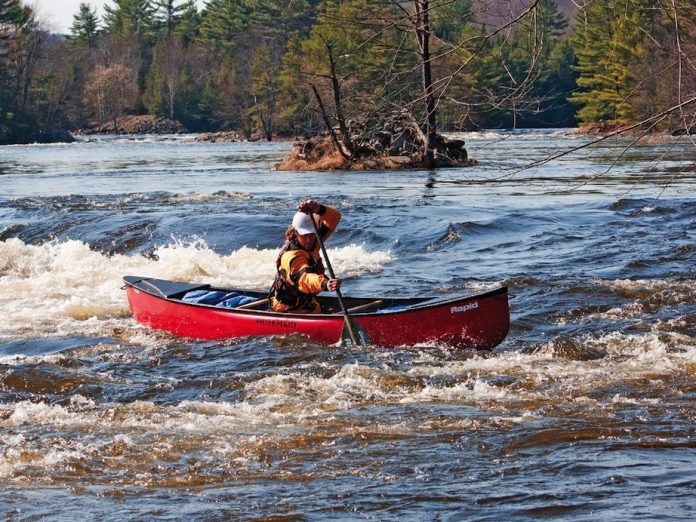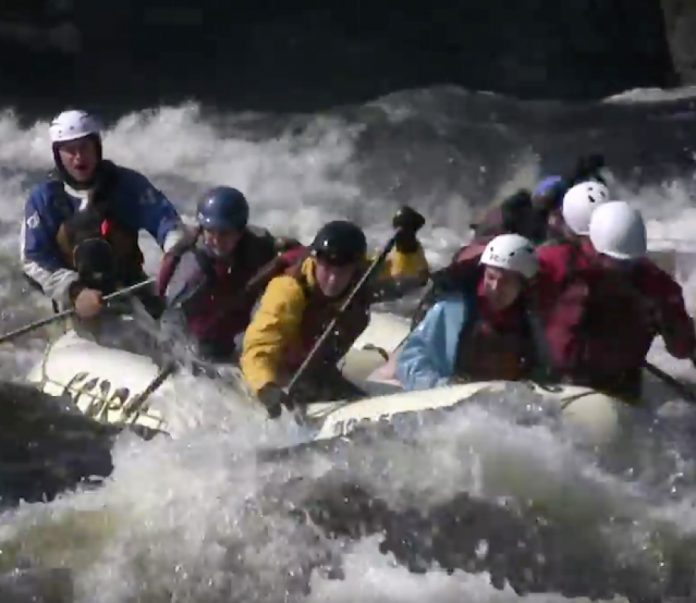In April 2011, the International Canoe Federation chose the Nantahala River Gorge as the site of the 2013 World Freestyle Kayaking Championships. Tucked away in western North Carolina, this whitewater epicenter has played host to slalom and wildwater competitions for years, but 2013 will be the first time in over 20 years the community has hosted an international event of these proportions.
The dam-controlled Nantahala won the honors of hosting the 2013 Worlds because of its guaranteed water releases, which allow organizers, not the river, to dictate the event’s timing. When high water brought additional cfs to the 2011 Worlds in Plattling, Germany, paddling was delayed. Nantahala organizers looked to avoid similar disruptions.
Because of the venue’s susceptibility to rock shifting and washout, it was decided that the feature, already a favorite of the locals, needed some work.
Andrew Holcombe, Nantahala local and Dagger Kayaks team manager, was one of the first to speak up for the event, “The construction of a permanent play spot on the Nantahala River has the potential to turn the area into a great freestyle destination.”
When construction began on the Nantahala last November, many river purists cringed at the sight of backhoes in the water, wing dams, sand bags and diverted river channels. Avid local boater and river guide, Bill Baxter, was chosen as contractor for the project and assured onlookers that, despite appearances, proper measures were taken. Due to water management and permits from a multitude of federal agencies, Baxter was given less than 30 days to work his magic.
“Being an old kayaker and a builder who respects nature myself, I can understand why there has been some negative feedback on messing with the river,” says Baxter. “This is natural, but my job is to see that the end product will look like it’s always been there and be a huge boost to freestyle kayaking. I might even try surfing it.”
The grand opening of the Freestyle Wave was held in December 2011, but the finished product remains a work in progress. There have already been two tweaks to the feature and a third is scheduled for this spring. While the engineering continues on the wave itself, the community is working to create an event worthy of international status by September 2013.
“Whitewater recreation is not only an important part of the local economy,” says event coordinator Zuzana Vanha. “It is important to much of the community on a more personal level.”
According to Joe Jacobi, CEO of USA Canoe/Kayak, the governing body for whitewater sports in America, everyone stands to gain from the main event.
“Bringing the freestyle championships to the Gorge is a double opportunity,” he says. “The event could revitalize the Nantahala Gorge, the country’s cradle of whitewater competition; and at the same time, it could raise the profile of whitewater freestyle for North American audiences.”
This story originally appeared on page 19 of the Early Summer 2012 issue of Rapid magazine. Read the entire issue here.



